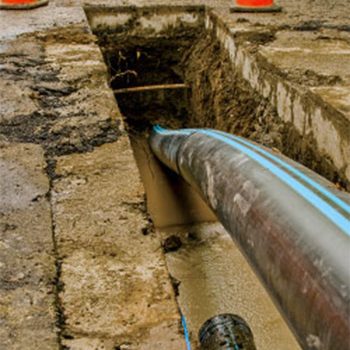At the heart of Silicon Valley is Palo Alto, California — a community that is home to entrepreneurial companies and forward-thinking minds. Take a short drive and chances are you’ll happen upon Stanford University, Google, Apple, Hewlett-Packard and other iconic institutions of invention, progress and ingenuity.
While Palo Alto has plenty of commercial appeal for residents, its best asset might be a city utility engineering department insistent on putting the best infrastructure systems in the ground.
The City of Palo Alto is one of very few municipalities that own all major utilities in its jurisdiction — electric, gas, water and wastewater. By employing engineers that bring different utility backgrounds to the table, the City of Palo Alto draws from a wide array of pipeline expertise to create ideas of how infrastructure should work in the city’s favor.
We’ll be gone in a few days, and barring any accidents, we won’t be back in your lifetime or mine
Currently, Palo Alto is in the midst of a 71-year rehabilitation cycle for their water infrastructure. Their philosophy is to be proactive in maintaining their infrastructure systems. This differs from municipalities that are reactive, springing into action only when water mains break or are on the verge of failure.
Part of the current strategy is to use high-density polyethylene (HDPE) piping and the latest resin — PE4710 — to put the best possible leak-free system in the ground. City engineers know a leak-free piping system is possible after years of gas infrastructure experience.
“The biggest driver (of Palo Alto choosing HDPE) is that I attended a water seminar years ago,” recalls Greg Scoby, engineering manager for water, gas and wastewater in Palo Alto. “With a background in gas, I sat through a day of water main installation instruction and heard a term I’d never heard before, which was ‘acceptable leakage during pressure testing.’ That term is simply not used in the gas industry. In the gas industry, it has to be tight. You don’t put a leaking facility in the ground. That drove me to try to see if it was possible to implement the use of polyethylene in water systems.”
Scoby took a cue from the mantra of Silicon Valley and forged a path of invention and progress. His constituents are the beneficiaries.
In 2010, the City of Palo Alto installed 33,515 linear feet of HDPE water mains with 51 new fire hydrants and reconnection to 669 existing customer service lines. The work was performed by Ranger Pipeline, Inc., a local contractor with 6- to 12-inch Performance Pipe DriscoPlex 4710 HDPE DR 11 pipe provided by P & F Distributors of nearby Brisbane, Calif.
The PE4710 resins have increased density, higher tensile strength and higher resistance to slow crack growth over PE3408/PE3608 materials. The improved properties of the piping material allow the pipe to meet higher performance requirements, according to the Performance Pipe website. Like other HDPE materials, PE4710 has an amazing lifespan when properly fused.
The majority of the butt fusion was performed on a McElroy Rolling 28 Combination Unit (CU). At the staging point, lengths of pipe were fused, put on rolling pipe holders and rolled to the streets to be installed. Ranger Pipeline also used a McElroy Wireless DataLogger® to record the parameters of each fusion joint.
Palo Alto’s residents aren’t benefiting from pipe material alone, but rather the installation process that is constantly fine-tuned by engineers and other city decision makers.
With the city’s Water Main Replacement Capital Improvement Project 21/22, the city was investigating the cost savings of using horizontal directional drilling versus open trench installations. The findings helped the city plan for future installations of the 71-year rehabilitation cycle.
The likelihood that trenchless installations will be the future for Palo Alto is high. Anyone who digs into city streets incurs a street cut fee, which makes less digging more appealing to budgets.
Should there be a problem with utilities in the future, the city will spend less time hunting for the lines under the street because the new infrastructure was mapped three ways. Firstly, the pipes were installed with #10 solid copper tracer wire attached to the pipeline. The city also used ball markers, which are electronic marking systems that use a passive antenna that is tuned to a certain frequency for identifying and locating the pipeline. Finally, GPS mapping was used to document the location of the pipeline.
Before leaving the site after a site visit, one of Palo Alto’s residents approached Scoby and asked when they were going to be off her street.
Scoby’s reply was simple — “We’ll be gone in a few days, and barring any accidents, we won’t be back in your lifetime or mine.”
Now that’s forward thinking.



